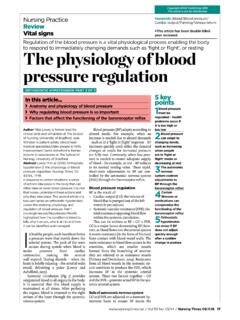Transcription of Post-Traumatic Stress Disorder
1 National Instituteof Mental HealthPost-Traumatic Stress DisorderWhat is Post-Traumatic Stress Disorder , or PTSD?Some people develop Post-Traumatic Stress Disorder (PTSD) after experiencing a shocking, scary, or dangerous is natural to feel afraid during and after a traumatic situation. Fear is a part of the body s normal fight -or- flight response , which helps us avoid or respond to potential danger. People may experience a range of reactions after trauma, and most will recover from their symptoms over time. Those who continue to experience symptoms may be diagnosed with PTSD. Who develops PTSD?Anyone can develop PTSD at any age. This includes combat veterans as well as people who have experienced or witnessed a physical or sexual assault, abuse, an accident, a disaster, a terror attack, or other serious events.
2 People who have PTSD may feel stressed or frightened, even when they are no longer in danger. Not everyone with PTSD has been through a dangerous event. In some cases, learning that a relative or close friend experienced trauma can cause to the National Center for PTSD, a program of the Department of Veterans Affairs, about seven or eight of every 100 people will experience PTSD in their lifetime. Women are more likely than men to develop PTSD. Certain aspects of the traumatic event and some biological factors (such as genes) may make some people more likely to develop are the symptoms of PTSD?Symptoms of PTSD usually begin within 3 months of the traumatic incident, but they sometimes emerge later. To meet the criteria for PTSD, symptoms must last longer than 1 month, and they must be severe enough to interfere with aspects of daily life, such as relationships or work.
3 The symptoms also must be unrelated to medication, substance use, or other illness. The course of the illness varies: Although some people recover within 6 months, others have symptoms that last for a year or longer. People with PTSD often have co-occurring conditions, such as depression, substance use, or one or more anxiety a dangerous event, it is natural to have some symptoms or even to feel detached from the experience, as though you are observing things rather than experiencing them. A health care provider such as a psychiatrist, psychologist, or clinical social worker who has experience helping people with mental illnesses can determine whether symptoms meet the criteria for be diagnosed with PTSD, an adult must have all of the following for at least 1 month: At least one re-experiencing symptom At least one avoidance symptom At least two arousal and reactivity symptoms At least two cognition and mood symptomsRe-experiencing symptoms Flashbacks reliving the traumatic event, including physical symptoms such as a racing heart or sweating Reoccurring memories or dreams related to the event Distressing thoughts Physical signs of stressThoughts and feelings can trigger these symptoms, as can words, objects, or situations that are reminders of the symptoms Staying away from places, events, or objects that are reminders of the experience Avoiding thoughts or feelings related to the traumatic eventAvoidance symptoms may cause people to change their routines.
4 For example, after a serious car accident, a person may avoid driving or riding in a and reactivity symptoms Being easily startled Feeling tense, on guard, or on edge Having difficulty concentrating Having difficulty falling asleep or staying asleep Feeling irritable and having angry or aggressive outbursts Engaging in risky, reckless, or destructive behaviorArousal symptoms are often present they can lead to feelings of Stress and anger and may interfere with parts of daily life, such as sleeping, eating, or and mood symptoms Trouble remembering key features of the traumatic event Negative thoughts about oneself or the world Distorted thoughts about the event that cause feelings of blame Ongoing negative emotions, such as fear, anger, guilt, or shame Loss of interest in previous activities Feelings of social isolation Difficulty feeling positive emotions, such as happiness or satisfactionCognition and mood symptoms can begin or worsen after the traumatic event and can lead a person to feel detached from friends or family do children and teens react to trauma?
5 Children and teens can have extreme reactions to trauma, but their symptoms may not be the same as those seen in adults. In young children under the age of 6, symptoms can include: Wetting the bed after having learned to use the toilet Forgetting how or being unable to talk Acting out the scary event during playtime Being unusually clingy with a parent or other adultOlder children and teens usually show symptoms more like those seen in adults. They also may develop disruptive, disrespectful, or destructive behaviors. Older children and teens may feel guilty for not preventing injury or deaths. They also may have thoughts of revenge. For more information, see the National Institute of Mental Health (NIMH) brochure, Helping Children and Adolescents Cope With Disasters and Other Traumatic Events, available online at do some people develop PTSD and other people do not?
6 Not everyone who lives through a dangerous event develops PTSD many factors play a part. Some of these factors are present before the trauma; others become important during and after a traumatic factors that may increase the likelihood of developing PTSD include: Exposure to dangerous events or traumas Getting hurt or seeing people hurt or killed Childhood trauma Feeling horror, helplessness, or extreme fear Having little or no social support after the event Dealing with extra Stress after the event, such as loss of a loved one, pain and injury, or loss of a job or home Having a personal history or family history of mental illness or substance useResilience factors that may reduce the likelihood of developing PTSD include: Seeking out support from friends, family, or support groups Learning to feel okay with one s actions in response to a traumatic event Having a coping strategy for getting through and learning from a traumatic event Being prepared and able to respond to upsetting events as they occur, despite feeling fearHow is PTSD treated?
7 It is important for anyone with PTSD symptoms to work with a mental health professional who has experience treating PTSD. The main treatments are psychotherapy, medications, or both. An experienced mental health professional can help people find the treatment plan that meets their symptoms and people with PTSD may be living through an ongoing trauma, such as being in an abusive relationship. In these cases, treatment is usually most effective when it addresses both the traumatic situation and the symptoms. People who have PTSD or who are exposed to trauma also may experience panic Disorder , depression, substance use, or suicidal thoughts. Treatment for these conditions can help with recovery after trauma. Research shows that support from family and friends also can be an important part of recovery.
8 For tips to help prepare and guide you on how to talk to your health care provider about your mental health and get the most out of your visit, read NIMH s fact sheet, Taking Control of Your Mental Health: Tips for Talking With Your Health Care Provider, available at , sometimes called talk therapy, includes a variety of treatment techniques that mental health professionals use to help people identify and change troubling emotions, thoughts, and behaviors. Psychotherapy can provide support, education, and guidance to people with PTSD and their families. This type of treatment can occur one on one or in a group and usually lasts 6 to 12 weeks but can last types of psychotherapy target PTSD symptoms, and others focus on social, family, or job-related problems. Effective psychotherapies tend to emphasize a few key components, including learning skills to help identify triggers and manage symptoms.
9 One common type of psychotherapy, called cognitive behavioral therapy, can include exposure therapy and cognitive restructuring. Exposure therapy helps people learn to manage their fear by gradually exposing them, in a safe way, to the trauma they experienced. As part of exposure therapy, people may think or write about the trauma or visit the place where it happened. This therapy can help people with PTSD reduce symptoms that cause them distress. Cognitive restructuring helps people make sense of the traumatic event. Sometimes people remember the event differently than how it happened, or they may feel guilt or shame about something that is not their fault. Cognitive restructuring can help people with PTSD think about what happened in a realistic can learn more about different types of psychotherapy on the NIMH website at most studied type of medication for treating PTSD is a type of antidepressant medication called selective serotonin reuptake inhibitors (SSRIs).
10 SSRIs may help control PTSD symptoms such as sadness, worry, anger, and feeling emotionally numb. SSRIs and other medications may be prescribed along with psychotherapy. Other medications may help address specific PTSD symptoms, such as sleep problems and nightmares. Health care providers and patients can work together to find the best medication or combination of medications, as well as the right dose. Check the Food and Drug Administration website ( ) for the latest information on patient medication guides, warnings, or newly approved can I find help? The Substance Abuse and Mental Health Services Administration (SAMHSA) provides the Behavioral Health Treatment Services Locator, an online tool for finding mental health services in your area. Find treatment programs in your state at For additional resources, visit If you or someone you know is in immediate distress or is thinking about hurting themselves, call the National Suicide Prevention Lifeline toll-free at 1-800-273-TALK (8255) or the toll-free TTY number at 1-800-799-4 TTY (4889).


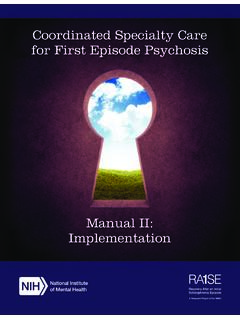

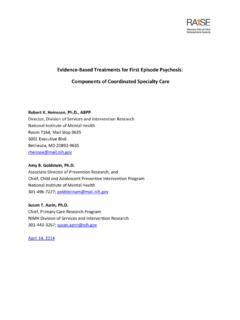




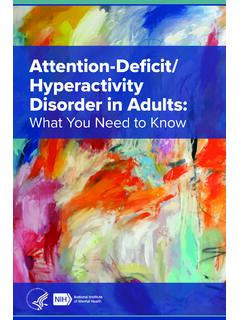
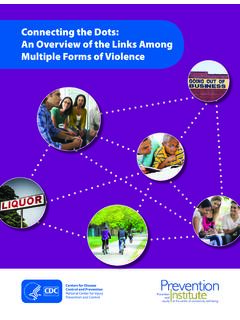
![[Module 1] How the Flight, Fight, Freeze Response works …](/cache/preview/3/2/0/e/3/f/7/2/thumb-320e3f723e8c6a3e92966e3715965cd0.jpg)
